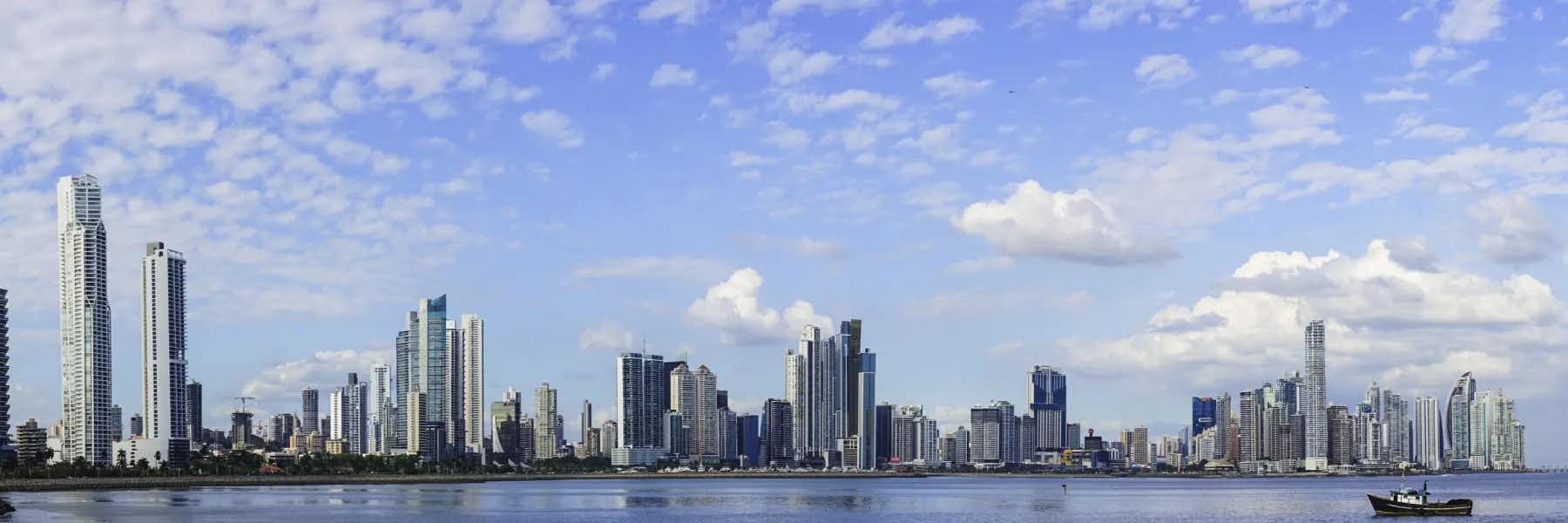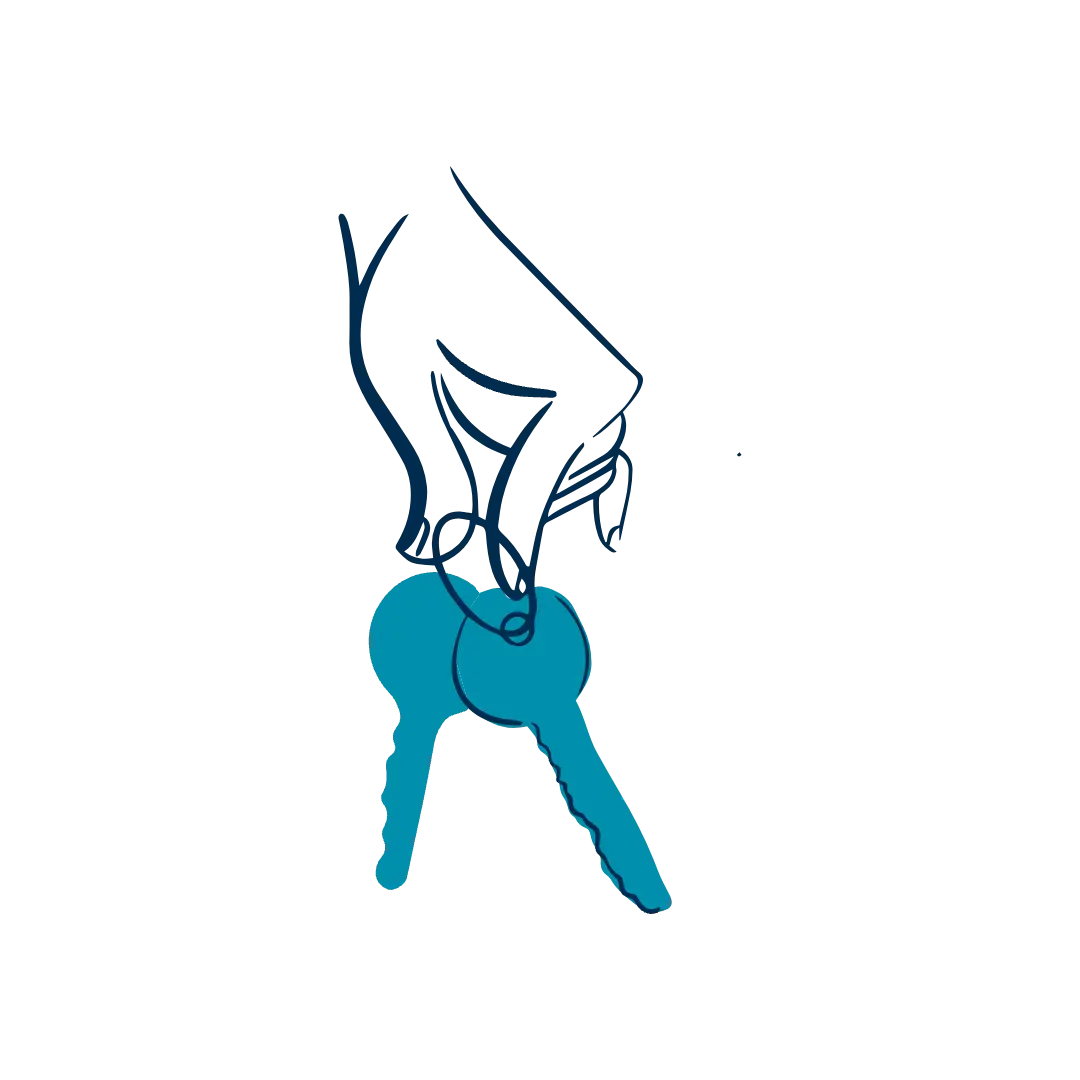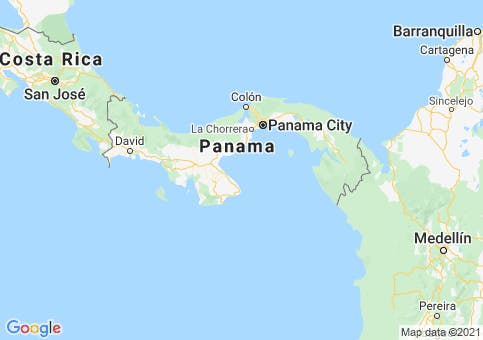Although a small country, roughly the size of South Carolina, Panama is very diverse. Officially a Catholic country, Panama has a long-established tradition of religious and ethnic tolerance with large communities from all over the globe including China, Korea, Israel, Lebanon, India, Colombia, and Venezuela to name a few.
It’s estimated that at least 75 % of the population identifies as Roman Catholic, with 15% to 25% belonging to other Christian traditions. Other religions or belief systems practiced in Panama include the Bahá'í Faith, Buddhism, Judaism, Islam, and Hinduism.
Each of Panama’s regions has its own look and feel, not to mention traditions. Indigenous and Afro-Caribbean communities have rich histories here. And, as in North America, colonization forever altered the cultural landscape.
Spanish explorers arrived here as early as 1501 and Panama was part of the Spanish Empire from 1513 until 1821. The failed French attempt to build the Panama Canal, from 1881 to 1889, left its mark and for the better part of the 20th century, through December 1999, the U.S. ran and maintained the Panama Canal.
Early Cultures and Traditions in Panama
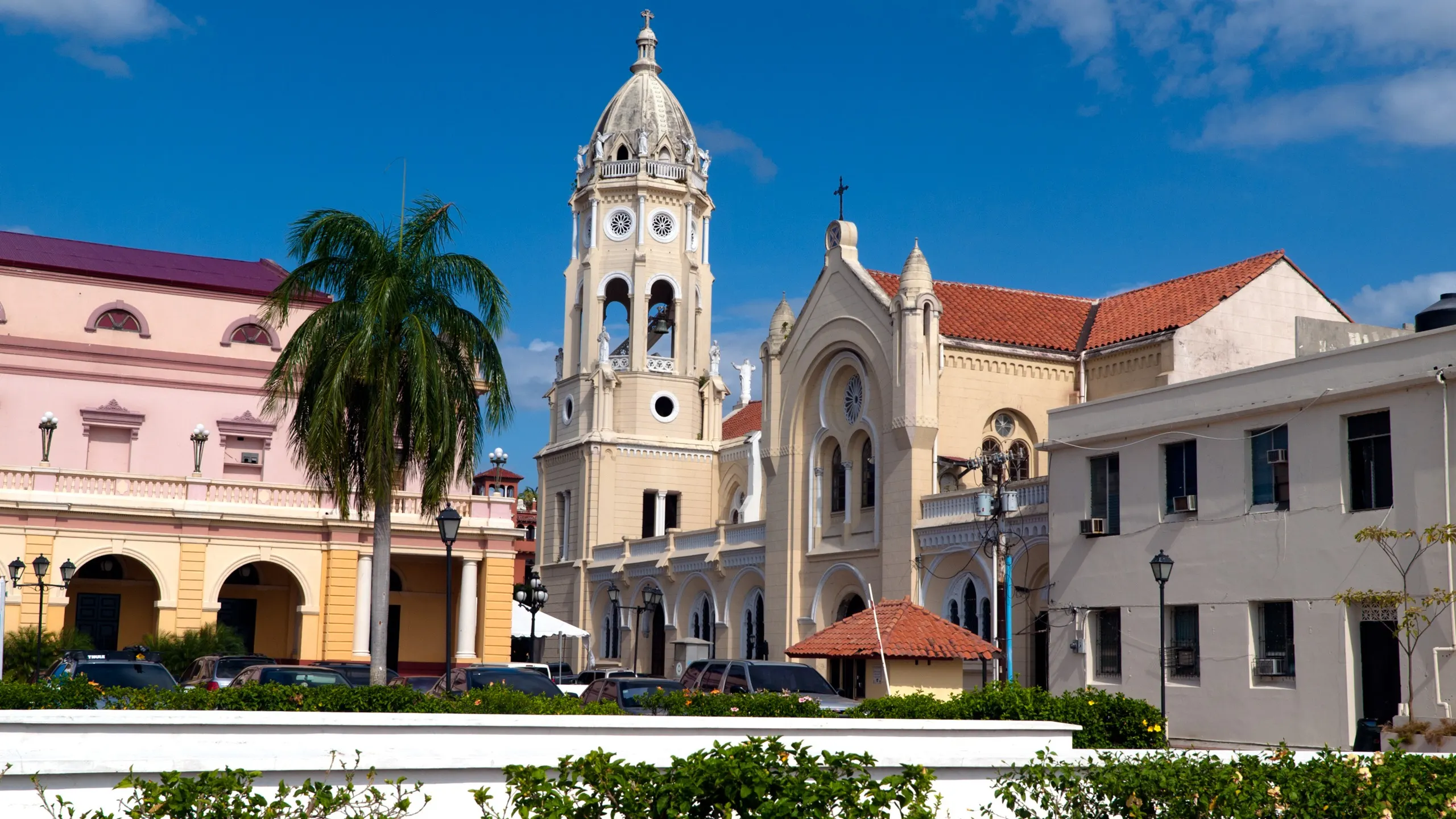
Panama is one of the only countries in the Central and South America region with a large indigenous population. Seven major tribes continue to live traditional lifestyles here, and the largest rule autonomously in massive reserves. Small groups of visitors are welcome to visit and learn about the tribes and their efforts to keep their lands in pristine condition.
The Guna possess what may be some of Panama’s most spectacular real estate, as many of them make their homes on the jewel-like Caribbean isles of Guna Yala. Here there is a focus on sustainable tourism. Tourists enjoy the simplicity of white-sand beaches, turquoise waters, and seafood plucked fresh from the ocean.
Tours to the Emberá-Wounaan communities, are also popular. Along with the Guna and the Ngäbe-Buglé tribes that inhabit the scenic Chiriqui and Bocas del Toro regions, the Emberá are known for their artistic handicrafts.
Notable traditions that have survived into modern times include ancestral hunting, fishing, and the custom of living in elevated huts. Emberá women still tend to go bare-chested and wear colorful cloths from the waist down, with flowers in their hair. Another trademark is their ebony “temporary tattoos.” For these they use a dye made from the juice of the jagua fruit. Much like Indian henna or mehndi, the stain lasts a couple of weeks.
Panama’s Deep Afro-Caribbean Roots

Panama is home to thousands of people of African descent, whose ancestors came from places like Jamaica, Barbados, Trinidad and Tobago to help build the canal…or were slaves brought over during colonial times. Though they live all over the capital and the rest of the country, Afro-Caribbeans have predominantly settled in the provinces of Bocas del Toro and Colón. In these provinces, many locals speak English with a Caribbean accent.
If you’re a lover of music and dance, you won’t be disappointed. Here you will hear the Latin rhythms of salsa and merengue, Afro-Antillean inspired reggae and percussion, and so much more.
Spanish Folklore in Azuero and Beyond
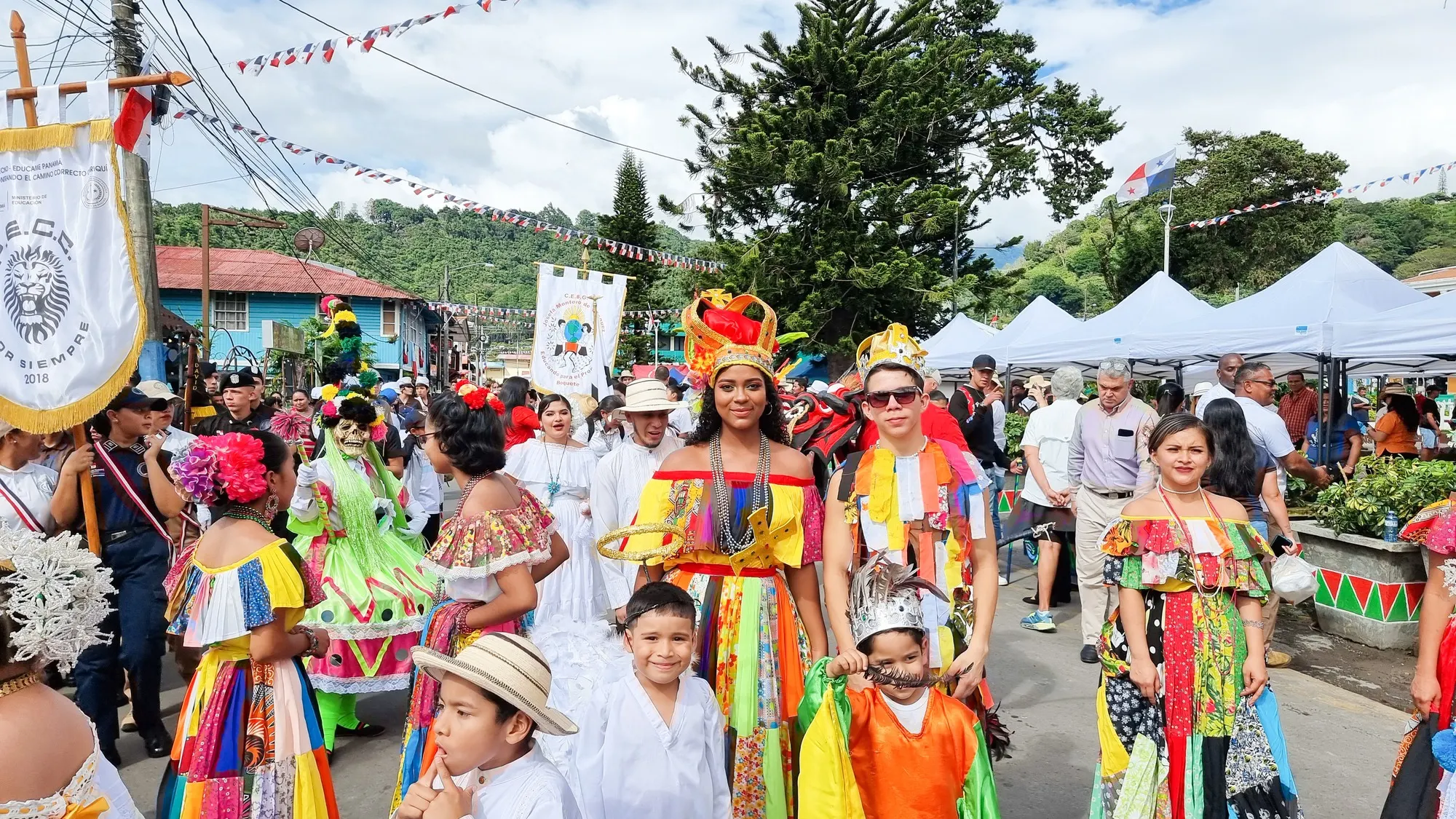
There are many places in Panama where you can see evidence of its deep Spanish roots. The Azuero peninsula, known as the “cradle of folklore,” is perhaps the most popular. For major national celebrations and festivals, there is no better place. During the Carnival season, locals and tourists flock here in droves. Traditional dances are set to tipico music, characterized by yodeling, accordions, and small guitars called mejoranas.
There are over 700 festivals held in Panama every year, so no matter when you visit, you should be able to find one. Dancers wear everything from flashy carnival wear to the dreamy white dress known as the pollera. The biggest event of the year is Carnival, held over the four days preceding the Catholic Lent. (Dates vary every year, but it’s usually in February.)
Culture and Traditions in Today’s Panama
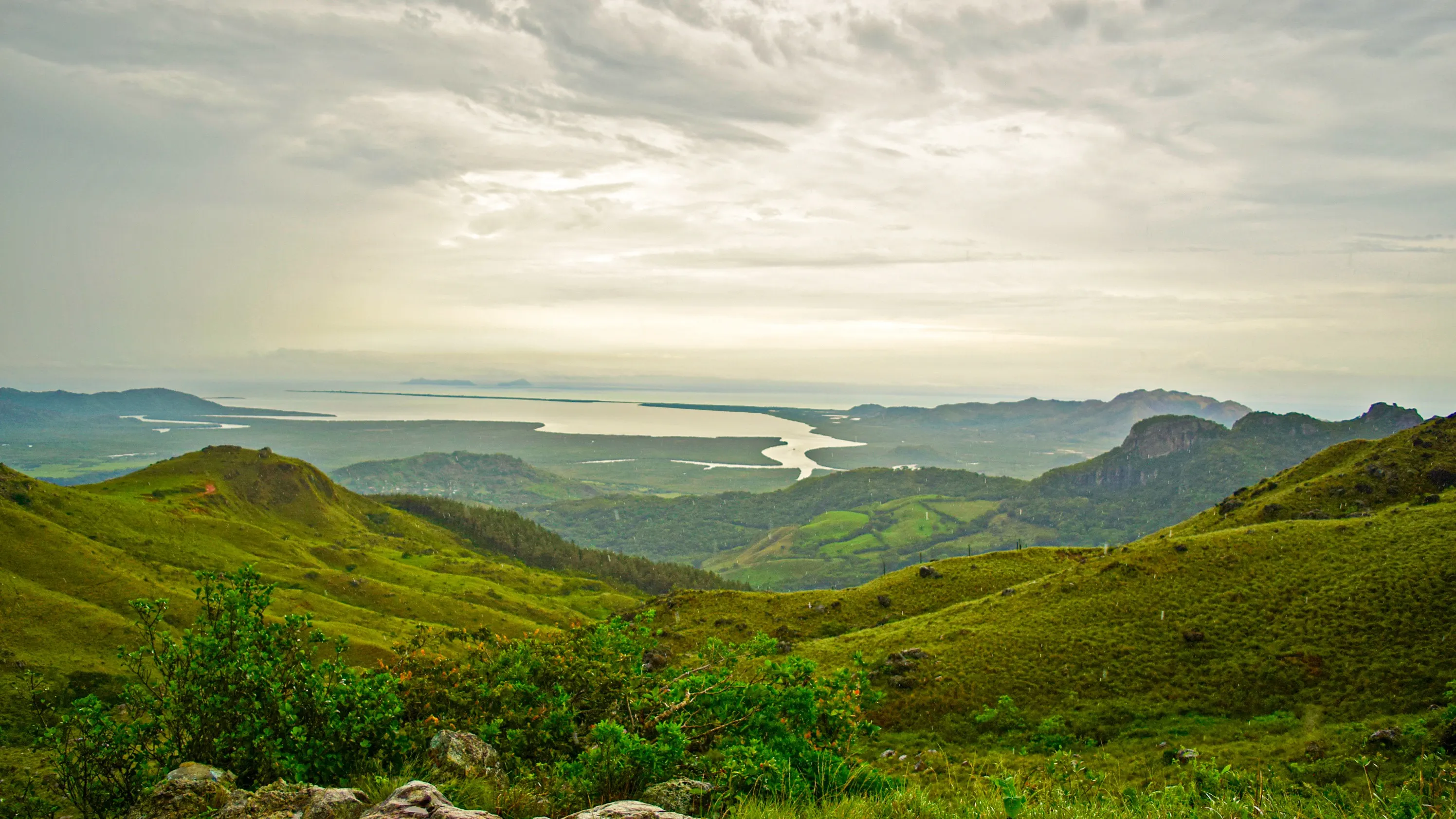
Though Spain and France played important roles in Panama’s history, the existing republic came into being in 1903. A strong U.S. presence helped mold Panama into one of Latin Americans most modern and advanced countries.
From 1904 to 1914, the U.S. built the Panama Canal, staying on to administer the waterway and the surrounding “Canal Zone” and later building and staffing military bases. In the decades that followed, everything from infrastructure to fashion trends were influenced by the U.S. presence and international traffic through the canal.
Today, international residents, visitors, businesses, and culture continued to influence Panamanian life. Local infrastructure remains excellent…and Panama’s modern, cosmopolitan vibe makes it all too easy to forget that you’re in Central America.
Land in Panama City and you’ll see a scintillating skyline of chrome and steel towers. Along the Panama Bay is the Cinta Costera, or coastal belt, a wide avenue lined with greenery, walkways, bicycle paths, recreation areas, and more. It borders the busy International Banking District, where sharp-dressed execs sport smart phones and drive the latest model cars. That is, when they’re not riding the new metro that sweeps through the city’s busy commercial areas. The nation is buzzing with energy, and individuals here are reaping the benefits.
Need-to-Know: Etiquette, Business Interactions, and More
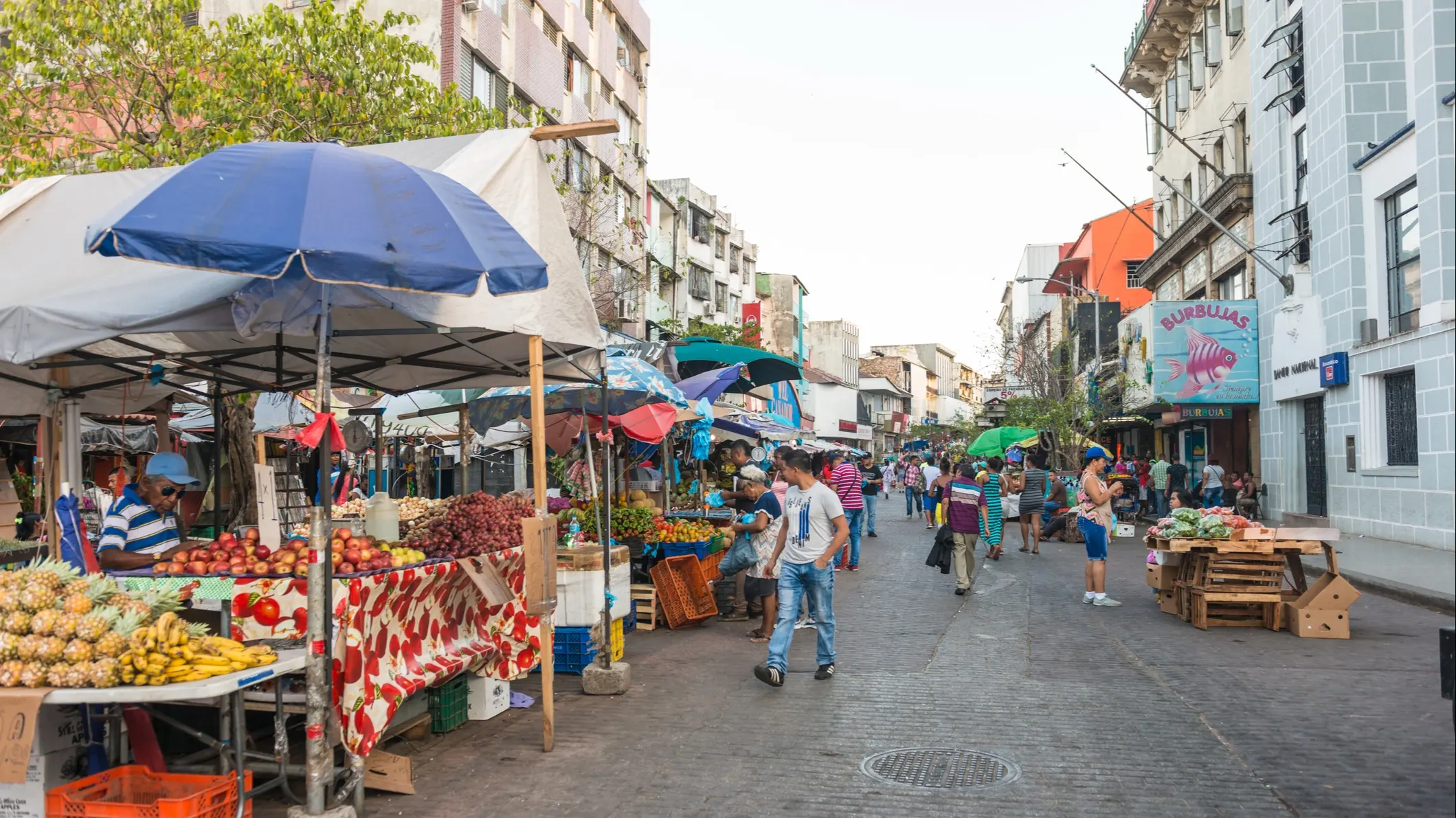
A regard for personal connections is perhaps the best-known trait in Panama, particularly in business. Even today, Panamanians take time and effort to establish a personal relationship before entering into a business relationship (as is the case in most of Latin America).
Thankfully, Panama’s international history and long association with the U.S. means that Panamanians are accustomed to foreigners from all over the globe. Due to its strategic location, and unique position as a trading hub, Panamas citizens represent almost all of the world’s cultures and religions. It is a true “melting pot” of races, with over 70% of the population being mestizo (mixed Amerindian and Caucasian).
You will also find that the term “PC” or “political correctness” carries little weight here. Panamanians are quite direct. If you gain weight, the next time your local friend sees you, he or she is likely to say: “You’ve gotten fatter.” In general, people here don’t mean to offend, so they see no reason to be PC. People here just tend to say whatever they’re thinking.
If you’re invited to someone’s home, it is polite to bring a small token, for example, flowers, a box of candy, a souvenir from your hometown, or a bottle of wine. Hands are kept above the table, elbows off. Talking with a full mouth or chewing with an open mouth is, as elsewhere, considered impolite. Conversation while eating is kept to “light” topics such as sports, favorite foods, the weather, etc. Compliment the food a few minutes in and, before leaving, thank your host for a lovely meal.
Also, be prepared for pampering. You should always offer to help, but in formal households, your offer will be politely refused (well-to-do locals will have a maid to do the clearing and washing, and won’t want you in the way). You’ll more than likely be served first. If possible, invite your host to a nice lunch or dinner to reciprocate (at your home if you have one in Panama, and if not, at a restaurant). Make sure you’re not too rusty when it comes to general dining etiquette, as upper-crust Panamanians have impeccable manners.
Video Guide to Traditions and Culture in Panama
Video Transcript
Hey there. I am International Living Panama Editor, Jessica Ramesh, coming to you from Panama City, Panama.
Today, I thought we would take a step back and look at Panamanian culture and traditions, which is definitely part of the reason that I really love living here. And I thought I would start by telling you just a little bit about our population here so that you guys can get an idea of really just how varied it is. Because a lot of times when people talk about Panamanian culture and traditions, they think just of our Spanish colonial heritage. But there is a lot more to it than that.
I'm going to start with sort of going back in time to some of the older culture and traditions here. Panama has seven major Indigenous tribes still in existence here in Panama. Today, we are actually one of a few Central American countries that still have Indigenous tribes living in the country. You won't find the same variety immediately to the north of us, for example.
And of our seven major tribes, the two best-known tribes are probably the Guna people and the Emberá. So I don't know how many of you have heard of Guna Yala. It is on the Caribbean side of Panama. And what the Panamanian government did for its large groups of Indigenous peoples was set aside land for them. What you would know as a reserve. They are called comarcas. Guna people's comarca is autonomous. So it is basically governed by them. And they have some of the most incredible Caribbean islands under their jurisdiction. What their very intent on is to keep that clean, pristine, and to preserve their traditional ways of life. So they don't allow big development. You're not going to find any resorts on these islands, just little huts that look very much like the huts they lived in one hundred, 200, 300 and more years ago. They still engage in traditional fishing. They use panga boats, motorboats to get from one island to another, small boats...and fish for lobster and sell fish to people who come in on their boats. But traffic is limited and only a limited amount of tourists can visit this area.
So if you go to Kuna Yala, you'll be able to see how the people live traditionally. But it's unlikely that you would be able to witness any of their festivals. Precious few outsiders have been witness to their festivals. But you can read a lot. There's a lot of material available online on Amazon and just online in general about their culture. You can read about their festivals. They have very specific religious or spiritual beliefs rooted in nature. They've been studied because they have very low incidences of heart disease. They're very well known for consuming huge amounts of cocoa. They mash the beans and make it into a very strong drink. This is not your average cup of cocoa with milk and sugar, but a potent brew that they drink in large quantities. Scientists have actually studied them to understand whether there is a link between that, they believe there is, and their excellent heart health.
Now you can take tours to the Guna region. I definitely highly recommend it, but only for those who are OK with roughing it. As I said, there are no big resorts. Lots of times what you're agreeing to do is sleep in a hut. Eat what they fish from the sea. Very, very simple food. Things like grilled lobster and maybe a little bit of rice.
You're not going to have, you know, a huge selection of salads and vegan or vegetarian foods if you'd go to this region. So it's all about just being out on the beach and almost like camping.
The next tribe that I want to tell you about is the Emberá tribe. And you can go on tours to some of their comarca or reserve areas. Actually, they have some that are very close to Panama City. You can fly from Panama City to Guna Yala on a 20-minute flight if you are not afraid of little planes. You can get to some of the Emberá communities within a couple hours. You can book tours through organizations like Gamboa or Ancon. And if you go to one of their communities, they'll show you how they cook their food. They'll show you how they live. They'll show you some of their dances. And you can even get your arms painted with their traditional henna, like tattooing, which lasts a couple weeks. And it's made from a local fruit or nut called jagua. They extract a black ink from this. It's very similar to what people refer to as black henna, and it's traditional for them to paint their faces and their arms in geometric designs and sometimes blocks of color. Very beautiful! And you can also look at and buy their handicrafts. They're known for a lot of different types of handicrafts, they are master crafts people. My favorites are the intricately woven baskets. They have some that are cruder weaves that will cost you a little bit less if you are just interested in the colorful souvenir to take home. But there are really, really fine weaves that take much, much longer, a lot more work to work on those fibers, to get them thin enough, and then to do the actual coloring and weaving of the baskets. And those will hold water. They're woven so tightly. So that's really something interesting to see and do when you come down here. So those are the two major tribes.
And then we come forward in history to our Afro Panamanian culture. So I mentioned earlier that we're really known for our Spanish culture. But in Panama, actually, the Afro Panamanian community has been here for many years and has really colorful costumes and dances and festivals that if you get the opportunity to witness are very fun. Many of the Afro Panamanians that we have here were brought over as slaves during Spanish colonial times. So we're talking 500 or more years ago. Panama City is over 500 years old now. And then you have a lot of Afro Panamanians who are the descendants of people who came here to work on the Panama Canal project from places like Barbados and Jamaica.
So these communities, you will find Afro Panamanian communities all over Panama, of course, but they largely settled in the Bocas del Toro province and in the Colon province of Panama. And both provinces have sights to see, they have great areas to visit if you would like to see that side of Panama. They're a little bit off the beaten path. Not every tourist gets to go to the Colon province. I always recommend skipping Colon City, which is one of our only high-crime areas. But the rest of the province outside of that capital city, there's lots to see.
And one of the most popular historic sites being the town of Portobello, where you can see ancient fortifications and cannons. And there you have, during Carnival time every year and just after Carnival every year, you have important festivals in that region where the local dance troupe, sometimes referred to as congos, will come out in costumes that are very colorful and wearing masks. That might be a little scary to the little ones if you're traveling with them. These paper maché diablo or devil's masks are actually really beautiful, but they're part of the tradition, particularly that brilliant Carnival tradition, which I'm going to come back to in a moment. If you get a chance to witness that in the Colon province, that's something really special and that not many tourists get a chance to witness. You would have to plan your trip carefully so that you're here in time and those dates. So just look at the dates for Carnival in general and Google will give them to you for whatever year you're interested in.
Now, I mentioned Bocas del Toro, which is another province where you will find Afro Panamanian culture to be very strong. Bocas del Toro every year has its own festival that typically takes place later in the year, August, September. In Bocas del Toro you will find not only a lot of Afro Panamanians with their traditions, dances, culture, and you will also find one of our other Indigenous comarca. So one of our largest Indigenous groups, the Ngöbe or the Ngöbe-Buglé people, they have their reserved lands or comarca between the provinces of Chiriqui and Bocas del Toro. These comarcas are reserved lands and are not tiny. They are the size of some of our provinces. They're large areas. The Ngöbe-Buglé tribes in this region also have autonomous jurisdiction in their province. You can visit their islands and learn about their culture and buy handicrafts from them, but they determine how many people can come into the area. And generally speaking, you cannot buy property or build big resort type deals on their lands. Their intent is to keep them, as I said before, traditional, clean, pristine, and really preserve those ecosystems as well. Which is really cool.
And now we come to, as I mentioned before, some of our culture and folklore comes from Spanish colonial traditions. And this is probably what most of you are familiar with. One of the things that you'll see the most on posters and postcards from around the country is the traditional dress associated with Panama's folklore. And this is actually known as one of the most beautiful national costumes in the world, the pollera, which is the costume worn by women. Men wear a costume as well known as montuno. It's really that beautifully embroidered pollera dress that gets attention. The most expensive polleras take months to craft and are hand embroidered.
A lot of times people will assume that it's just one type of dance. But, there are multiple types of dances with specific steps and there are multiple types of polleras. The one you'll see the most is a very beautiful off-the-shoulder dress. It has a blouse with frills on it. It's typically worn with very specific gold jewelry, including a choker and a sort of chain of gold coins or medallions. The headdress is also a very intricate headdress. Traditionally, the little adornments that go all over the woman's head here were made of shiny fish scales. Nowadays, it's a little bit harder to find those.
If you do find them, they're definitely worth buying if you'd like to have them. But nowadays a lot of the cheaper versions are made out of beads, either the traditional white or pearl colors or really colorful, beautiful sort of newfangled adornments, which are very pretty as well. And then the pollera tends to come in at the waist and then come out in ruffles from the waist. And like I said, hand embroidered, very beautiful. Some of them are just white on white embroidery and some of them are very colorful. And then you have other pollera-type costumes that have completely colored skirts that are not always embroidered, but sometimes patterned with flowers and the like. So lots of different types of costumes, different types of dances with their own specific steps that you can see all over the country.
The region of Panama that is best known for its for polleras and for its festivals is the Azuero peninsula of Panama. The Azuero peninsula is a large, fat peninsula that juts south into the Pacific Ocean. If you pull up a map of Panama, you'll see that peninsula. And it is made up of parts of the provinces of Los Santos, Herrera, and part of Veraguas. So there's actually parts of three provinces on that peninsula, all known for their festivals. They like to say that they have some 700 festivals a year on the Azuero peninsula. I've never tried to count them all, but they certainly do have a lot no matter what time of year you come here, if you're interested in seeing that sort of old Spanish colonial traditional Panama. You can generally head to the Azuero peninsula at any time of year, catch a festival, buy parts of a pollera costume or a full pollera costume if you want to lay out that much money, and experience some of the dances, eat some of the foods, that sort of thing.
The best-known festival in this region is our annual Carnival festival. Earlier, I mentioned that Afro Panamanian regions have their own Carnival festivals. Well, the best-known Carnival is on the Azuero in Panama. We do get a lot of people that come from outside Panama to attend our Carnival. A lot of people say it's second only to the Carnival in Rio de Janeiro in the Americas, and it's very similar. You've got the really big floats that take a whole year almost to put together. I've seen papier mâché fire-breathing dragons on these floats and genies that are I don't know how many feet tall that tower into the sky. The women wear these costumes that way, you know, like 100 pounds with the headdress and they're dancing the entire time on the float, which takes incredible strength and stamina. But it is a beautiful thing to behold.
If you attend a Carnival celebration, you'll hear people saying that they are celebrating the pagan God Momo during Carnival, which might surprise you because Panama is a predominantly Catholic country. But the tradition around Carnival is all about letting loose and having four days of debauchery. Drinking and dancing into the wee hours is a big part of it. And then it ends right as Lent is beginning. And that is when your average Panamanian will make sacrifices for the 40 days of Lent. So both Carnival and Lent and then the following Easter tradition are very much a part of Panamanian life here in Panama. I highly recommend a trip to the Azuero peninsula if you want to see where it all started, Panama's old Spanish roots. And if you want to go to a festival, your chances are good, as I said, any time of year of catching something amazing there.
One of the little-known festivals takes place in the little town of Guararé every year—and the dates will vary every year, so you can just Google for those—and that is the Festival del la Mejorana. It's a small Spanish guitar that is still handmade in this region of Panama. And they have a whole festival built around it with lots of music, lots of dancing. If you listen to the Panamanian people's traditional music, it will almost remind you of some of the yodeling traditions of Europe. They have their own yodeling traditions. But there's a lot of fun and poking fun at people if you understand Spanish and you listen to the lyrics of the songs. Sometimes they'll do this, calling back and forth where they're insulting each other and making fun of each other. It took me a while to be able to understand enough Spanish that I could even catch some of it. But that was very enriching for me when my Spanish got good enough that I could understand some of it. I still don't understand all of it. And they are really funny. And it's almost like, you know, rap battles in the U.S. where people go back and forth and they haven't prepared anything, but they're so clever and they come up with things that rhyme and with really good burns or insults and everybody's laughing and dancing and having a wonderful time.
I hope that some of what I've talked about here today has piqued your interest. And maybe you get a little time to go off the beaten path and see some of the festivals, the lesser-known festivals, visit some of the areas that not every tourist gets to, like Portobello in the province of Colon or like Bocas del Toro; the Caribbean islands of Bocas del Toro are every bit as beautiful as the Bahamas. I know because I used to work on Carnival Cruise Lines and I was there every week. And the good thing about Bocas del Toro is it's never crowded, you generally find a stretch of beach on which you can relax and not have to fight with crowds for a bit of sand to lay your towel in or, you know, wade in among hundreds of people into the water. We still have a lot of areas that are little islands and where a boat can dock for the day and let you have your own desert island for the day, which is probably one of my favorite experiences here in Panama.
Get Your Free Panama Report Today!
Get Your Free Panama Report Today!
Learn more about a healthier outdoor life in Panama and other countries in our daily postcard e-letter. Simply enter your email address below and we'll send you a FREE REPORT -- Panama: Easy, First-World Living and the World’s Best Retiree Program.

By submitting your email address, you will receive a free subscription to IL Postcards and special offers from International Living and our affiliates. You can unsubscribe at any time, and we encourage you to read more about our Privacy Policy.
